Today SevenPonds speaks with Thomas Civeit, Founder and CEO of Elysium Space, an online and APP service company that provides families the opportunity to have their loved ones’ cremation ashes memorialized in space. Thomas is a space engineer, whose experience includes having worked with the team on both NASA’s Hubble and James Webb telescopes. In 2003, he also worked on the Huygens Probe. In 2010, he moved to Silicon Valley to work at NASA’s Ames Center and the subsequent energy of the startup ecosystem led him to found Elysium Space.
Suzette: Your company is so intriguing. I see you have a strong background with deploying rockets into space. Having worked for NASA right here in Silicon Valley has given you the proper connections necessary for founding Elysium Space. How is it you decided to form a company to send ashes to space?
Thomas: When I moved to Silicon Valley, the energy of what was happening here was so intense. I had all these people around me who wanted to make things happen; it was exhilarating. I had early ideas of using the beauty of space as timely and universal. I wanted to go beyond technologically using space to that of a beautiful endless ocean filled with shooting stars and Milky Ways. I wanted to give people access to this type of unique memorialization.
Suzette: I love the idea of cremation ashes being placed in space. But what actually happens?
Thomas: What happens is the ashes burn up as a beautiful blazing shooting star. It’s a mesmerizing moment and an exceptional way to memorialize someone – literally dust to dust.
Suzette: Wow that sounds amazing! What a metaphor for a final memorialization. So what is the process if I want to use your service?
Thomas: We send a special kit to the family. It contains a metal cube, one cubic centimeter – about the size a single dice. The family member places that amount of ashes in the cube and sends it back to us in the kit. The cube is placed in a tray along with all the others we receive. We place the tray in a spacecraft. There may be as many as several hundred other cubes. We receive ashes of loved ones from all over the world, but we only launch out of the U.S. at three locations — Florida, Virginia and California.
Suzette: I noticed on your website you offer personalization for each cube?
Thomas: Yes, each metal cube can have the initials of the person who died. We also offer an 80 character message on the panel of the space craft. Family members love having a message as a final goodbye.
Suzette: I know there is another similar service (although I won’t name any names here) that’s been around for quite sometime. How is Elysium Space different?
Thomas: We did our marketing research and while this service was being offered over the last 15 to 20 years, there was a problem with their actually deploying very few missions. It was also more technologically oriented and not easily accessible to the average family unfamiliar with the space industry. So I knew there was a need for an accessible service. I asked many questions like “How will you remember someone from this?” and “How does it look from space?” This helped me shape the experience a person who lost someone would be seeking. So we created a beautiful experience of having your beloved travel among the stars. It’s a universal metaphor for anyone who wants something special as a stellar remembrance.
Suzette: What does your name Elysium Space mean?
Thomas: Elysium Space is named after the Greek mythology afterlife realm, Elysium, where the righteous and the heroic remain after death to live a blessed and happy life.
Suzette: How beautiful! Are there any personal stories of a person’s cremation ashes you put into space that struck a cord with you?
Thomas: Yes there was Daniel Wilson, a 34-year-old man, who died last year, and he loved space science, astronomy, basically a space fanatic. He was the type who got up at 3 A.M. with a telescope to look at comets. His best friend Dave, who considered him a brother, started raising money in Daniel’s memory, to send kids to NASA space camp. So far he has raised enough to send nine kids to camp. Daniel’s family had Elysium Space take his cremation ashes into “the heavens” to become a shooting star. It was a very special moment for Dan’s friends and family and, given my love of space, a great story too.
Suzette: So what’s the cost to be a shooting star?
Thomas: It’s about two thousand dollars.
Suzette: That sounds like a fair price – no sticker shock. So you have an APP, that sounds so cool. Please explain how it works.
Thomas: We designed it for a family and not a technical person. Everything the size of a tennis ball or larger is now tracked in space. The APP allows the family members to see the position of the ashes in space. The spacecraft orbits for months and then about a few weeks before it enters back into our atmosphere, the family is notified. Then they can be sure to track the cremation ashes for the big moment when it becomes a beautiful shooting star.
Suzette: What about the ecological concerns of creating space pollution?
Thomas: We have many people ask about orbital pollution. NASA has strict guidelines. The spacecraft orbits many times and then enters back to earth. When it enters back into the atmosphere, the cubes of metal and ashes all burn up. There is nothing left – it all flames out.
Suzette: How often do the rockets launch and when’s your next mission planned?
Thomas: Currently once a year, but we plan on adding another mission every six months. Right now, we are looking at September as the next launch date.
Suzette: Tell us – what’s next?
Thomas: We have plans to provide lunar missions as well as Milky Way ones too. It would allow cremation ashes to be part of the solar system when they are sent to the moon or become a part of the Milky Way. Imagine that!
Suzette: Wow, quite a beautiful visualization comes to mind! Well thanks for speaking with us Thomas, it’s been a pleasure!
Thomas: Thank you too, Suzette!

 Can I Send Ashes to Space? An Interview with Thomas Civeit
Can I Send Ashes to Space? An Interview with Thomas Civeit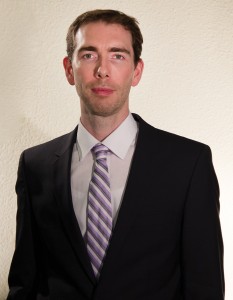

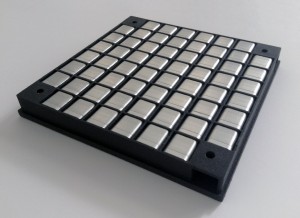
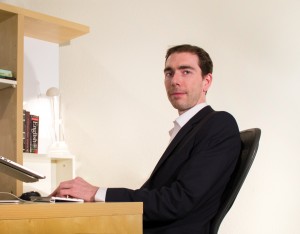

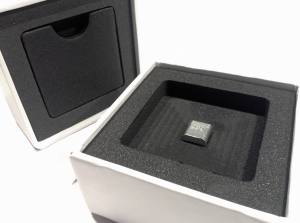
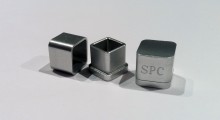



 Our Annual Seven Holiday Gifts for Someone Who Is Grieving, 2024 Edition
Our Annual Seven Holiday Gifts for Someone Who Is Grieving, 2024 Edition
 “Making Mobiles” by Karolina Merska
“Making Mobiles” by Karolina Merska
 “Hands Up to the Sky” by Michael Franti & Spearhead
“Hands Up to the Sky” by Michael Franti & Spearhead














